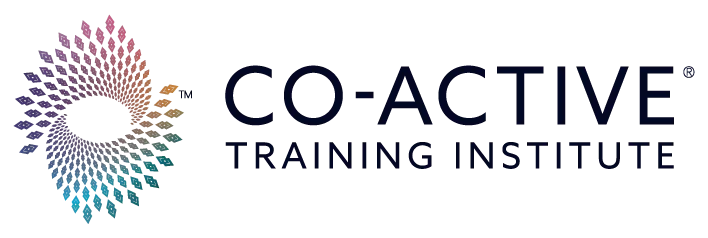The inner saboteur is the voice in your head that tells you you’re not good enough, smart enough, or ready enough. Most people try to fight it or ignore it, but that only makes it stronger. A better approach is to get curious about it instead.
You’re about to speak up in a meeting when a voice whispers, “They’ll think you’re unqualified.” You’re considering a career pivot when it says, “You’re too old to start over.” You draft an email, delete it, rewrite it three times, and still don’t send it because “it’s not quite right.”
That’s your inner saboteur at work. And there’s a way to work with it that actually creates change.
Where Does the Inner Saboteur Come From?
The inner saboteur is a protective pattern you learned as a kid. When speaking up got you shut down, you learned to stay quiet. When taking risks led to criticism, you learned to play small. These patterns helped you avoid harm back then.
The problem is that what protected you at seven doesn’t serve you at thirty-seven. But your saboteur doesn’t know that. It’s still running the same old playbook, convinced its job is to keep you safe by keeping you small.
Research shows these patterns create well-worn neural pathways in your brain, making them automatic and largely unconscious. When you face uncertainty or risk, your brain activates these old protective responses before you can even think about whether they’re still relevant.
The saboteur shows up in different ways depending on what you learned:
The Judge compares you to others and finds you lacking. Nothing you do is ever quite good enough.
The Pleaser makes you responsible for everyone else’s comfort. Saying no feels selfish. Your needs always come last.
The Stickler demands perfection. Mistakes are unacceptable. Anything less than flawless is failure.
The Hyper-Achiever drives constant achievement. Rest feels like laziness. “Enough” doesn’t exist.
The Victim keeps you focused on what’s wrong and why things will never change.
Most people have a combination of these. The specific type matters less than recognizing they’re protective strategies, not personality traits.
Why Fighting Your Saboteur Backfires
Most self-help advice says to fight the saboteur. Silence it. Replace negative thoughts with positive ones. Push through the fear.
Here’s the problem: what we resist persists. When you try to suppress the saboteur, you actually strengthen it. It’s like telling yourself “Don’t think about a pink elephant”—the command creates the thought you’re trying to avoid.
Plus, the saboteur genuinely believes it’s protecting you. When you fight it, you’re fighting a part of yourself that’s trying (however misguided) to keep you safe.
Ignoring it doesn’t work either. Unacknowledged saboteurs go underground and drive behavior from the shadows. You avoid conversations without knowing why. You procrastinate. You say yes when you mean no. For leaders, this shows up as micromanaging, avoiding difficult feedback, or taking on too much.
A Different Approach: Get Curious Instead
What if the problem isn’t the saboteur itself, but how we relate to it?
The Co-Active approach starts from a different premise: you’re naturally creative, resourceful, and whole. Not broken. Not in need of repair. When you start from wholeness rather than deficit, the saboteur stops being the enemy. It becomes one voice among many—a voice that needs to be updated, not destroyed.
Instead of fighting or ignoring it, you engage with it through compassionate curiosity. When the saboteur shows up, you get curious: What is this voice trying to protect me from? When did I first learn this pattern? What does it believe will happen if I don’t listen?
Dr. Jimmie Flores, a Co-Active coach, describes a powerful exercise: “Take about 15 minutes to define what your saboteur looks like. What is it? Is it an image? Is it a person you know? Does it have a creepy voice? What does it say?”
When Flores did this, he discovered his saboteur was “a creepy old man with a small oval face who hovers just behind my right shoulder,” whispering things like “You are not ready for that opportunity” and “You’re too old to start that type of work.”
By personifying it, Flores created distance. It was no longer the truth—it was a character with specific messages. And that distance creates choice.
Three Tools for Working with Your Saboteur
This shift requires specific skills:
Powerful Questioning creates awareness. Ask yourself: What does my saboteur look like? When does it show up? What is it trying to protect me from? What would happen if I didn’t listen right now? What does my authentic self want instead?
Deep Listening means hearing what’s beneath the surface. The saboteur speaks from fear and past experience. Your authentic self speaks from your values and vision. Both are present. Deep listening helps you discern which voice to follow.
Championing means holding belief in your wholeness even when you can’t access it yourself. A skilled coach reflects back your capability and resourcefulness when the saboteur is loud. Over time, you learn to do this for yourself.
Try This Exercise
Set aside 15 minutes. Close your eyes and ask: What does my inner saboteur look like? Let an image emerge. Is it a person? An animal? Does it have a specific voice? Where do you feel it in your body?
Then ask: When does it appear? What does it say? Write down the exact language it uses.
Finally: What will I do when it shows up? You might imagine setting it aside, putting it in timeout, or (like Flores) smashing it with a tennis racquet. The specific action matters less than recognizing you have a choice.
Try asking yourself three questions this week when you notice the saboteur:
- What are you trying to protect me from?
- What would happen if I didn’t listen right now?
- What does my authentic self want instead?
Dr. Flores also suggests this daily inquiry: “Is what I am doing right now life-affirming or life-numbing?”
What Changes When You Do This Work
When you stop fighting the saboteur and start engaging with it, something shifts. You develop the ability to observe your thinking without being controlled by it. You can hear the saboteur’s concerns without automatically following its directives.
This doesn’t mean it disappears. It means you can make conscious choices aligned with your values rather than unconscious reactions driven by outdated patterns.
For leaders, this changes everything. One-on-ones become development conversations. You can give direct feedback without softening it to meaninglessness. You can receive feedback without turning it into evidence of inadequacy. Teams feel the shift—psychological safety increases, people take more risks, innovation flourishes.
Is Coaching the Same as Therapy?
Not quite. Therapy explores the origins of the saboteur—childhood experiences, past trauma, relational patterns. It helps you understand why you developed these patterns and heal old wounds.
Coaching focuses on present awareness and future action: Now that you’re aware of this pattern, what do you want to do about it? How do you want to show up differently?
Both are valuable. Many people do both simultaneously. The key distinction: therapy helps you understand the past so it has less power over the present. Coaching helps you leverage the present to create the future you want.
From Concept to Practice
Reading about this is one thing. Experiencing it is another. This transformation happens through practice—through coaching real people, being coached yourself, embodying new ways of being in a supportive environment.
Co-Active Foundations is an eight-hour immersive experience where you practice these skills with real people. You work with powerful questioning, deep listening, and championing—not as concepts but as embodied practices. The training is co-led by experienced faculty who model the collaborative approach.
You leave with tools you can use immediately and a visceral understanding of what it means to see yourself as naturally creative, resourceful, and whole.
For those who want to go deeper, programs like Ignite the Practice and Deepen the Work offer pathways to develop advanced skills and earn recognized credentials.
This work creates ripples. Your transformation changes how you show up in every conversation, every relationship, every decision. And as you change, the systems you’re part of begin to change too.

